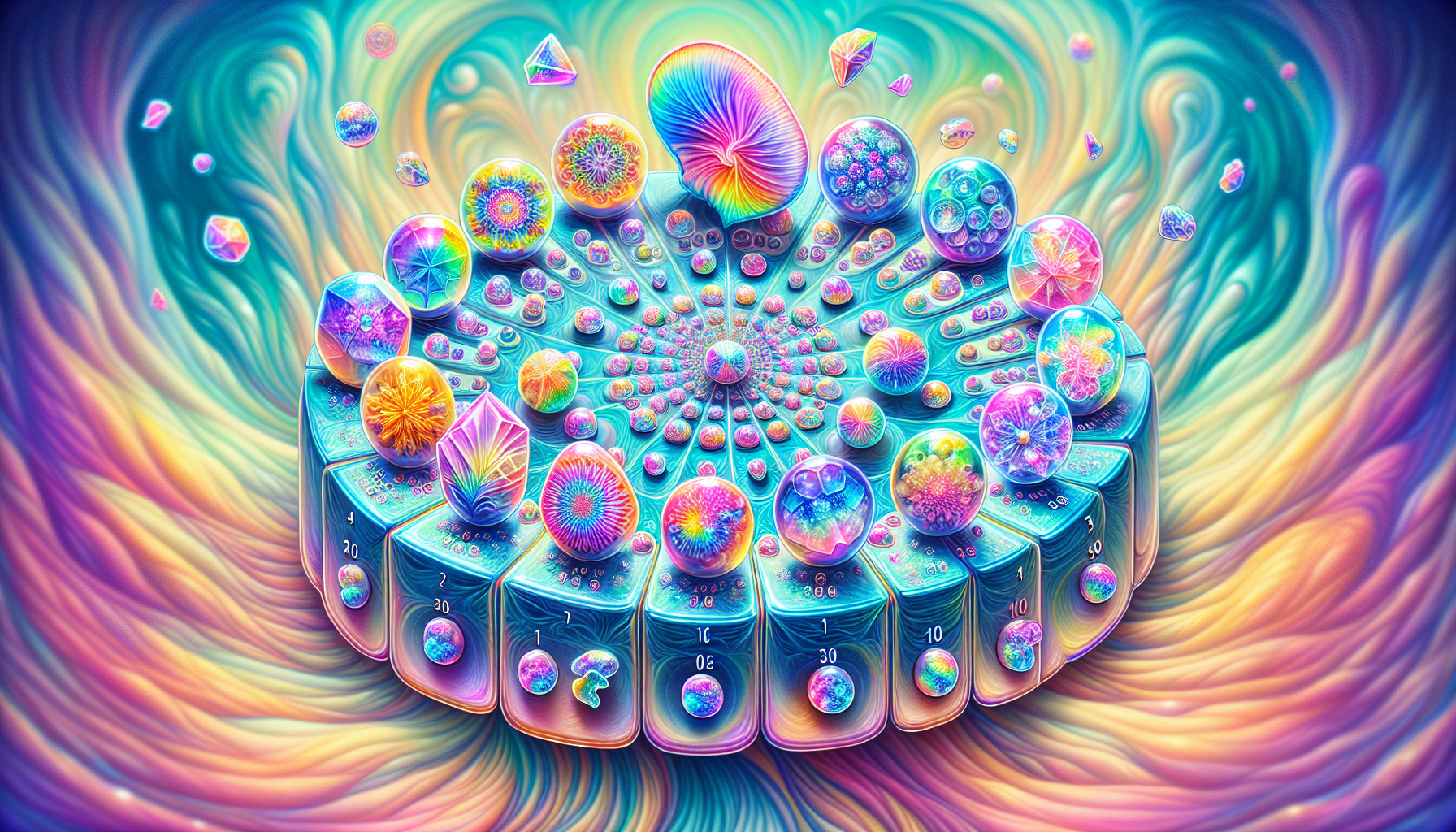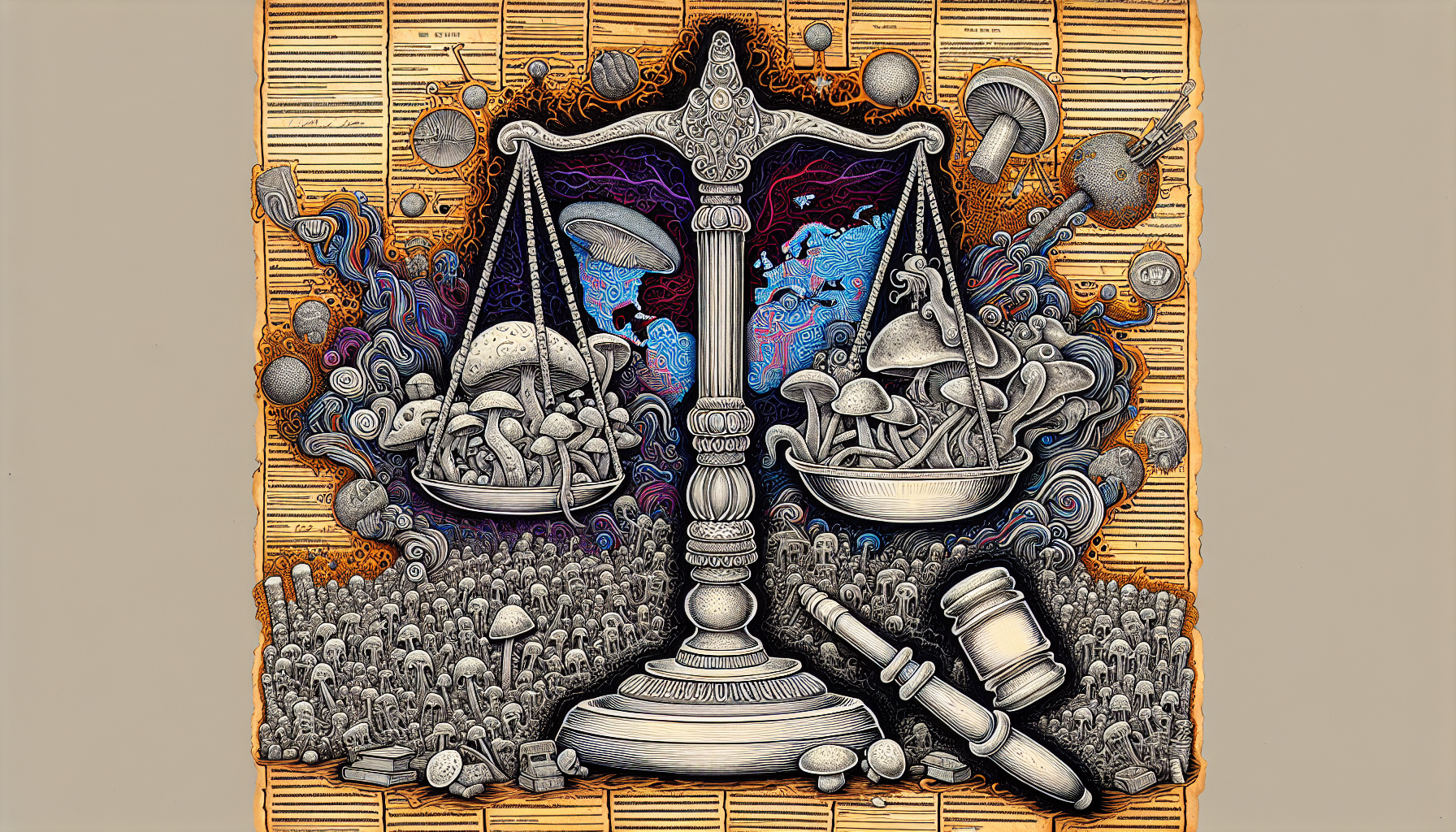What Is Microdosing? Benefits, Risks, and Research Explained
Aug 02, 2024
The practice known as microdosing involves consuming minute quantities of psychedelic substances such as LSD or psilocybin and most recently cannabis. The intention is to gain the benefits of these substances while avoiding substantial hallucinogenic experiences. We will delve into an explanation of what microdosing is, examine its possible advantages and dangers, and discuss up-to-date findings from research on these substances.
Key Takeaways
-
Microdosing involves taking very low doses of psychedelic substances like LSD and psilocybin to achieve benefits such as enhanced mood, creativity, focus, and energy without experiencing full psychedelic effects.
-
Microdosing schedules vary, with common patterns including taking doses two days in a row followed by two days off, or every other day, to prevent tolerance buildup while maintaining the benefits.
-
While there are potential benefits like improved mood and mental health, microdosing carries risks such as potential negative side effects, interactions with medications, legal issues, and the need for precise dosing to avoid unintended experiences.
Understanding Microdosing

The practice known as microdosing involves the administration of very small quantities of psychedelic substances routinely. It is designed to leverage the positive effects these substances can provide, all while avoiding intense hallucinogenic experiences. Commonly used substances for this purpose include LSD and psilocybin (also referred to as magic mushrooms), among others that may not be classified as psychedelics.
Take, for instance, a microdose of LSD, which typically amounts to about 10 to 20 micrograms. It represents roughly one-fifth to one-twentieth of what would be considered a recreational dose. Such a modest dose aims at gently modifying brain chemistry with an objective to boost mood, enhance creativity, and improve well-being without inducing substantial adverse reactions.
Those who engage in this regimen often claim several benefits such as improved:
-
focus
-
vitality
-
creative thinking
-
openness
Due in part to reports like these, many equate microdosing psychedelics with low-level psychedelic therapy — targeting beneficial aspects provided by potent compounds but maintaining control over them so they remain conducive rather than overwhelming like they might become at higher dosages.
Microdosing has witnessed rising acclaim due mainly to its proposed ability furthering mental and physical health along enhancing cognitive performance yet caution remains paramount when considering dosage levels timing between doses ensures amplifying positives whilst curtailing any potential negative outcomes associated with these powerful agents.
How Much is a Microdose?
Ascertaining the proper dosage is an essential component of microdosing. For LSD, a standard microdose hovers between 10 and 20 micrograms. Such very low doses are intended to subtly influence brain activity without triggering the profound effects typically associated with its recreational counterpart.
In terms of administering low doses for various substances, the following quantities are suggested:
-
Psilocybin mushrooms (also known as magic mushrooms): between 0.1 and 0.3 grams of dried mushrooms
-
DMT: from half a milligram to one full milligram
-
Mescaline derived from peyote cactus: either ten grams when fresh or about nine-tenths of a gram in its dried form
-
San Pedro cactus presents similar requirements. It calls for anywhere from ten to twenty grams if fresh, or three to five grams when dry.
These specified portions qualify as tiny doses which make up what we know as microdoses, just enough substance intake that yields beneficial effects while circumventing intense hallucinatory states or other pronounced psychedelic reactions.
Given how even minimal amounts can have significant impacts on users’ experiences, accurate dosing is critical. Individuals who practice microdosing must exercise precise control over their consumption levels so as not to undergo any non-intentional powerful sensations.
Maintaining this level of accuracy lends itself to viewing micrdosign through lenses scientific methodology and artistic technique.
Common Microdosing Schedules
Adhering to a consistent dosing routine is just as critical in the practice of microdosing as consuming small doses. Commonly adopted schedules are:
-
Two consecutive days of microdosing followed by two days off
-
Microdoses administered every other day
-
Microdoses taken solely on weekdays, while refraining during weekends
This consistency aims to achieve an equilibrium that allows one to experience the benefits without inducing tolerance or overwhelming their system.
It’s noteworthy that there isn’t definitive evidence favoring one particular schedule over others. The decision tends to be based on individual preferences and lifestyle compatibility. There’s a belief among some individuals that the impact of microdosing may extend beyond the actual day it’s taken, thus diminishing the need for taking doses daily.
In absence of a universally applicable regimen, regularity remains crucial. Establishing and adhering to a pattern facilitates observation of effects and necessary modifications along the way. Whether your chosen cadence involves spacing out doses with two-day intervals or limiting them strictly to workdays, discovering what suits you personally is vital.
Potential Benefits of Microdosing

Microdosing has gained popularity partly due to the purported benefits that users experience. These include enhanced mood, increased creativity, and better overall mental health. Specifically, micro doses of LSD are thought to produce a brief uplift in spirits by impacting the brain’s serotonin neurotransmitter system.
In terms of research evidence, a recent study discovered modest improvements in both mood and mental health across various groups of people regardless of their gender, age or state of mental health. Those who practice microdosing scored higher on measures relating to creativity as well as traits like open-mindedness and wisdom when compared with individuals who don’t microdose.
Numerous anecdotal reports claim that regular practices such as energy boosting enhancement levels focusing capability improvement can lead somebody toward improved sense of life wellbeing occasionally even utilized for alleviating particular ailments chronic pain episodes depression these reported effects though subjective could vary greatly among different users.
It is critical assess claims surrounding positive whether truly effective current studies suggest cases perceived cognitive enhancements may actually result from placebo thus comprehensive research required verify efficacy.
Risks and Safety Concerns
Utilizing psychoactive substances for microdosing is not without its inherent risks and safety issues. Notably, negative side effects could emerge from the use of compounds such as psilocybin. The common adverse reactions one might experience include confusion, feelings of fear or paranoia, visual hallucinations, headaches, elevated blood pressure, nausea.
Before embarking on a regimen involving microdosing these substances, it’s crucial to recognize possible side effects and engage with either a medical professional or healthcare experts to discuss suitability.
Those who have underlying health conditions are particularly at risk. This includes individuals with cardiac concerns or existing mental health diagnoses like bipolar disorder. In particular instances such as these, psilocybin can escalate the likelihood of having a heart attack among people afflicted by heart diseases and may provoke manic episodes in those diagnosed with bipolar disorder – especially if there’s already an established family history tied to it. Problematic is the chance of mistakenly ingesting incorrect mushroom varieties leading to potentially dangerous poisoning incidents.
The potential interaction between drugs also stands out as an area for concern when considering psychedelics like psilocybin because they tend to elevate serotonin levels which, if taken alongside specific medications, could lead to severe complications including cardiovascular issues and convulsions. Frequent usage through microdosing raises tolerance thresholds necessitating progressively higher doses over time that inadvertently cultivate opportunities for unplanned drug experiences.
Finally, but importantly, comes the legal repercussions since many regions consider possession and use of LSD illegal making exact dosing challenging due to its unregulated nature thus highlighting why seeking advice from qualified healthcare professionals becomes ever more imperative prior to commencing any sort of routine pertaining psychedelic substance utilization in light aforementioned dangers associated therein.
Legal Status of Psychedelics

The legal environment surrounding psychedelics varies significantly across the globe, creating a complicated situation for those considering microdosing. Progress has been made in certain areas toward their legalization and decriminalization. Notably, in 2023, U.S. federal lawmakers passed unprecedented legislation requiring clinical trials on psychedelic substances such as psilocybin and MDMA, especially targeted at military applications.
In parallel with legislative action, the FDA released preliminary guidance on conducting research related to psychedelic drugs that provides insight into how to structure such studies effectively. States like Oregon and Colorado are pioneering regulatory models for the legal use of these substances. Oregon was the first to introduce service centers focusing on psilocybin treatments followed by similar actions from Colorado after voters endorsed an initiative.
This progress is not uniform across jurisdictions. A patchwork of regulations persists: some states edge closer to accepting psychedelics legally while others uphold strict prohibitions against them. In California, despite rejecting a proposal permitting limited possession of select psychedelics through a gubernatorial veto—the state’s governor urged legislators to consider enacting measures enabling regulated therapeutic channels instead—while activists in Massachusetts managed enough signature collection efforts pushing forward a measure aimed at legalizing these compounds.
Before attempting microdosing practices involving psychoactive substances it’s vital one comprehends the specific local laws where they reside due to their importance stemming from possible substantial consequences violating such statutes may incur—a reminder highlighting the necessity for staying well-informed regarding applicable guidelines conducive toward ensuring usage adheres within confines deemed legally acceptable and prudent.
The Science Behind Microdosing
Research into microdosing is still in its early stages, and results to date have been inconsistent. Clinical trials often focus on young, well-educated, healthy individuals rather than those with medical conditions. Controlled studies involving LSD typically administer between 5 to 20 micrograms yet struggle to draw definitive conclusions.
Evidence suggests that low doses of LSD can enhance the plasma concentration at peak levels as well as improve emotion recognition and pain tolerance. These benefits appear limited in terms of cognitive enhancement. Separate research points towards increased brain connectivity within areas such as the thalamus and amygdala when participants microdose with LSD.
Challenges persist in researching the effects of microdosing due mainly to issues with blinding during clinical trials. Subjective effects are often noticeable at doses starting from 10 micrograms upwards making it difficult for researchers to maintain study integrity. Certain studies imply that mood or cognitive abilities may not be significantly altered over an extended period following a microdose, which raises questions about long-term efficacy.
Overall more research is imperative if science aims to corroborate claims pertaining specifically to improvements in cognition or mood attributed currently anecdotal evidence suggests potential advantages via small-scale dosing practices. Rigorous scientific inquiry remains necessary regarding confirming specific therapeutic benefits tied closely alongside investigations surrounding this subject matter continue evolving space much left uncover within discipline indeed.
Microdosing Cannabis: An Alternative Approach

Microdosing cannabis, like psychedelics, offers distinct advantages. Notably, it has been found to bring about marked decreases in symptoms of chronic pain, which can be highly beneficial for those enduring persistent discomfort.
Taking small amounts of oral cannabinoids for brief periods has demonstrated effectiveness in lessening spasticity-related symptoms among adults with multiple sclerosis. As an antiemetic agent, cannabis effectively mitigates the nausea and vomiting that often accompany chemotherapy treatments for cancer patients.
By consuming minuscule quantities of cannabis consistent with microdosing principles similar to those used with psychedelics, users aim for therapeutic outcomes without experiencing the intense psychoactive effects typical of larger doses. This method allows a nuanced and regulated application of medical marijuana.
The Dart MD: A Tool for Controlled Cannabis Microdosing

Constructed from anodized aluminum, the Dart MD is durable and sleek. It includes a signature spring-loaded button for controlled dosing, adjustable airflow, and an ash-ejection feature, ensuring a consistent and clean smoking experience. The chamber holds precisely 0.15 grams of flower, allowing users to microdose accurately without the need for constant measurement.
The Dart MD is easy to use and clean, making it ideal for medical cannabis users and those who want to avoid over-serving themselves. By providing precise control over each dose, the Dart MD helps users enjoy the therapeutic benefits of cannabis without the risk of taking too much. Shop the new Dart MD here: https://thedartco.com/products/dart-md
How to Use the Dart MD
The Dart MD is crafted to provide a seamless and uncomplicated microdosing experience. To utilize it effectively, proceed as follows:
Start by fitting the beveled edge bowl into the receptacle.
Rotate the bowl to gather an even 0.15 grams of cannabis without any cumbersome measuring tasks, facilitating a fluid and expedient process.
After packing, enjoy your smoke at your leisure, but remain cautious—allow ample time for THC’s effects to manifest fully before contemplating another dose. This step is vital in preventing overindulgence while accurately assessing how your body reacts.
The Dart MD isn’t just about easy dosing. Its design also simplifies cleaning substantially. Thanks to features like click-to-ash functionality combined with compatibility with isopropyl alcohol and pipe cleaners, maintenance of this apparatus remains straightforward and swift.
Summary
Microdosing offers a unique way to harness the benefits of psychedelic substances and cannabis in a controlled manner. From understanding the right dosages and schedules to recognizing the potential benefits and risks, there’s much to consider. As the legal landscape evolves and scientific research continues to develop, microdosing may become a more widely accepted practice. Whether you’re looking to enhance creativity, improve mood, or manage chronic pain, microdosing provides a promising avenue worth exploring responsibly.
Frequently Asked Questions
What is microdosing?
The practice of microdosing involves consuming minuscule quantities of psychedelic substances, which is done to reap the benefits such as enhanced mood and boosted creativity. This approach allows individuals to enjoy the positive effects without enduring intense psychoactive experiences typically associated with these substances at higher doses.
How much is a typical microdose?
A microdose consists of about 10-20 micrograms when using LSD and ranges from 0.1 to 0.3 grams for psilocybin mushrooms. The precise amount may differ with other substances such as DMT and mescaline.
What are the common microdosing schedules?
There is a lack of conclusive evidence to recommend one microdosing regimen over another, whether it be alternating between two days on and two off, every other day dosing or limiting the practice to weekdays.
What are the potential benefits of microdosing?
Research is needed to ascertain whether microdosing can truly enhance mood, creativity, mental health and general well-being, despite the potential it has shown for these improvements.
How does the Dart md help with cannabis microdosing?
The Dart MD assists users in microdosing cannabis through its ability to dispense exact doses and its feature of modifiable airflow, which is ideal for medicinal consumers as well as individuals who want to prevent excessive intake.
This device is fashioned as a one-hitter pipe intended for regulated use of cannabis.


